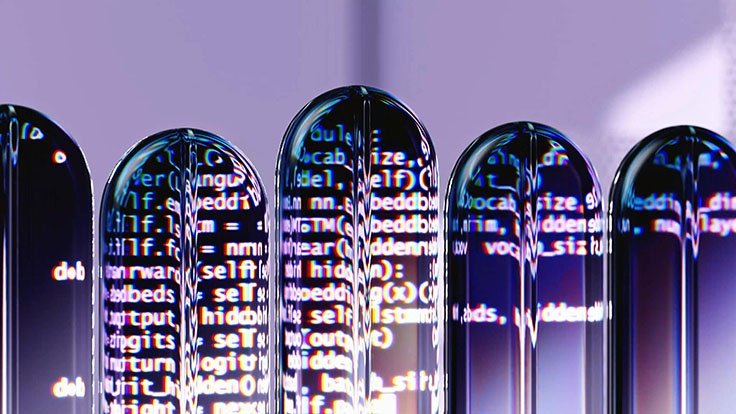What Are AI-Driven Design Tools and Their Future

Image Source: Pexels
Today, artificial intelligence (AI) has reshaped almost all industries, and design is no exception, particularly its utilities. Many trending AI-driven design tools offer unmatched efficiency, automating complex tasks from web layouts to their interactive prototypes.
This material explores the current state and future of AI-powered design tools, highlighting their key functionalities and evolving techs.
What Are AI-Driven Design Tools?
These AI-driven design tools are software platforms that can help integrate artificial intelligence into your work and craft easy-to-design web interfaces, graphics, and other interactive experiences for your users.
They’re also today’s savvy tools to help you maintain your website’s friendliness. They analyze data like a breeze, use machine learning algorithms to suggest designs, and automate repetitive tasks, making user experiences more relevant as end goals, like:
- Adobe Sensei
- Canva Magic Resize
- Uizard
This teacher-named Adobe is integrated within Adobe Creative Cloud, which uses machine learning to enhance image editing, layout generation, and more.
With Canva, you can automatically tweak and resize designs for different social media platforms, making sure there’s consistency in all your posts.
It’s one breezy prototyping tool that can help transform your sketches into fun, interactive, and work-savvy creations.
By leveraging these tools, you can focus more on creative strategy while AI handles your data-driven mods and repetitive tasks.
Key Functionalities of AI-Driven Design Tools
These AI-driven design tools, as they advance, offer more powerful, time-saving features with vital functionalities that can cover:
Automated Layout Suggestions
Some AI tools, such as Wix’s ADI (Artificial Design Intelligence), can competently analyze your preferences to create comprehensive layout ideas specially crafted for your specific audiences.
Content Creation and Adaptation
More specialized tools like Jasper can generate copies tailored for design elements or target audiences, aligning visuals with your desired pitch.
Image and Video Enhancement
These AI-powered tools can help you quickly auto-enhance images, upscale visuals, and generate outstanding graphics to level up your work. Some platforms, like Deep Dream and Runway ML, can give you more room to experiment with effects and style transfers, especially if you want highly engaging outputs.
Personalization and A/B Testing
AI optimizes more designs today by personalizing content based on your data inputs. More platforms like Unbounce can help you do some quick A/B testing, helping you identify which design variations yield better engagement for your target consumers.
The Security Aspect: A Growing Concern
With more AI-driven design tools handling vast amounts of user data, data security and privacy have become more critical, especially for creators like you. Open-source software IR tools - like top options recommended by platforms such as Wiz - have become essential for businesses that want to secure data and respond effectively to operational surprises.
These tools can help mitigate the risks of data breaches, making sure user information remains secure and compliant with regulations or security standards.
The Future of AI-Driven Design: Trends to Watch
The future of AI-driven design holds exciting innovations, especially in transforming experiences for designers and creators, improving their workflows, and redefining design roles and aspects. From today onwards, you can expect to meet these growing, highly innovative trends.
Augmented Reality (AR) and Virtual Reality (VR)
As already experienced, AI will continue to enhance digital design by enabling lifelike AR and VR experiences, especially in e-commerce and education platforms in the U.S. and all over the world.
Voice-Activated Design
As amazing voice search technology grows, AI-driven design tools will continue to integrate and exhibit remarkable voice-command prowess. This will allow designers to make adjustments through spoken commands, streamlining workflows and making them more inclusive, even for physically challenged individuals.
Predictive Design
By analyzing extensive and more inclusive user behavior data, futuristic AI tools can efficiently predict and recommend design choices so you can best engage your users. This will make your designs become more responsive and highly individualized.
Ethical AI and Bias Reduction
While AI continues to become integral to design, ethical considerations will play a more comprehensive role. More developers will aim to reduce biases in algorithms to ensure fair, inclusive design turnouts.
The Value Proposition for Businesses
Adopting these AI-driven design tools offers businesses significant advantages that include:
Cost Efficiency
As they routine tasks and leverage AI insights, businesses can effectively reduce production costs and overall expenses. According to research, some companies with AI-driven workflows see productivity increases of up to 40% in some of their notable activities.
Faster Time-to-Market
As tech advances, AI is more empowered to effectively speed up design processes, allowing businesses to launch products and campaigns more quickly due to its speed and accuracy. That’s how automated A/B testing and layout generation can support rapid iteration, keeping brands agile and responsive.
Embracing a More Collaborative Future
As foreseen, rather than replacing human designers, AI-driven tools complement human creators by handling data-heavy tasks while designers focus on creative strategy for more impressive outputs.
The future can be seen to bring more synergy between AI and human creativity, allowing designers to push creative boundaries with the assurance of a secure and quality-driven toolset.
Copyright © . All Rights Reserved